The 21st Century ‘AUwai
To affirm the resiliency of our ancestral frameworks, we organize our educational and entrepreneurial programs in harmony with the ʻ auwai principle. The ʻ auwai model does not corral ‘at-risk’ students en-mass through light-touch programs. Instead, like the water in an ʻ auwai, MAʻ O interns enrich the edu-preneurial space of the farm while they are enriched by that same environment through a long-term mutual commitment, creating a shared risk and mutual benefit between the organization and the intern.
“Love, respect, and the willingness to work”
The ʻ auwai theory of change is grounded in native Hawaiian pedagogy that is reflected in the interaction between three essential program components, set in a contemporary farming context:
ʻ āina - provider of abundant physical and natural resources that feed us physically, spiritually, emotionally, and intellectually;
ʻ ike kupuna - ancestral knowledge from which generational learning is catalyzed and pono (righteous) living is sustained and mana (spiritual power) is accrued;
kanaka - people who transmit ancestral memory and lived experience to connect the past, present and future piko (centers), thus facilitating our resilience and continuity as a community.
Youth matriculating through the ʻ auwai flourish in this culturally meaningful and communally relevant context, wherein they are challenged with high standards and provided with holistic support. In practice, our approach includes acculturating students to college attainment and lifelong learning by maximizing peer-to-peer engagement, balancing the provision of support with the giving of kuleana (farm work that requires responsibility), empowering youth to generate action-oriented goals, and providing individualized mentorship.
Across many generations, our kūpuna (ancestors) have bequeathed us the ancestral technology of the ahupuaʻ a system (a mountain to ocean land management unit). This includes the enhancement of natural waterways through the building of ʻ auwai to manage precious fresh water within the ahupuaʻa to ensure that the people and the ʻ āina flourished. Extending from the poʻ owai (headwaters), through successive kalo loʻ i (taro cultivation areas), to the muliwai (nearshore estuaries), the ʻ auwai weaves producers of crops and the caretakers of our fisheries into a sophisticated and abundant closed-loop community food system. As the water passes through the system, it feeds kalo and is in turn enriched by nutrients. Upon reaching the shore, the ʻ auwai’s accumulated richness feeds fishponds and nearshore fisheries.
MA‘O Educational ‘Auwai
An ʻauwai is literally on open channel of water that connects a river to a taro patch or fishpond. As the water flows through these food systems it gains nutrients and ends up being a critical component to the biological health of the estuary. We use the term to show that an intern can gain knowledge (and nutrients) by navigating through the education/work system, and can positively impact themselves, their families, and their entire community. At MAʻO the ʻauwai includes all youth engaged in work and learning on the farm in a given year.


